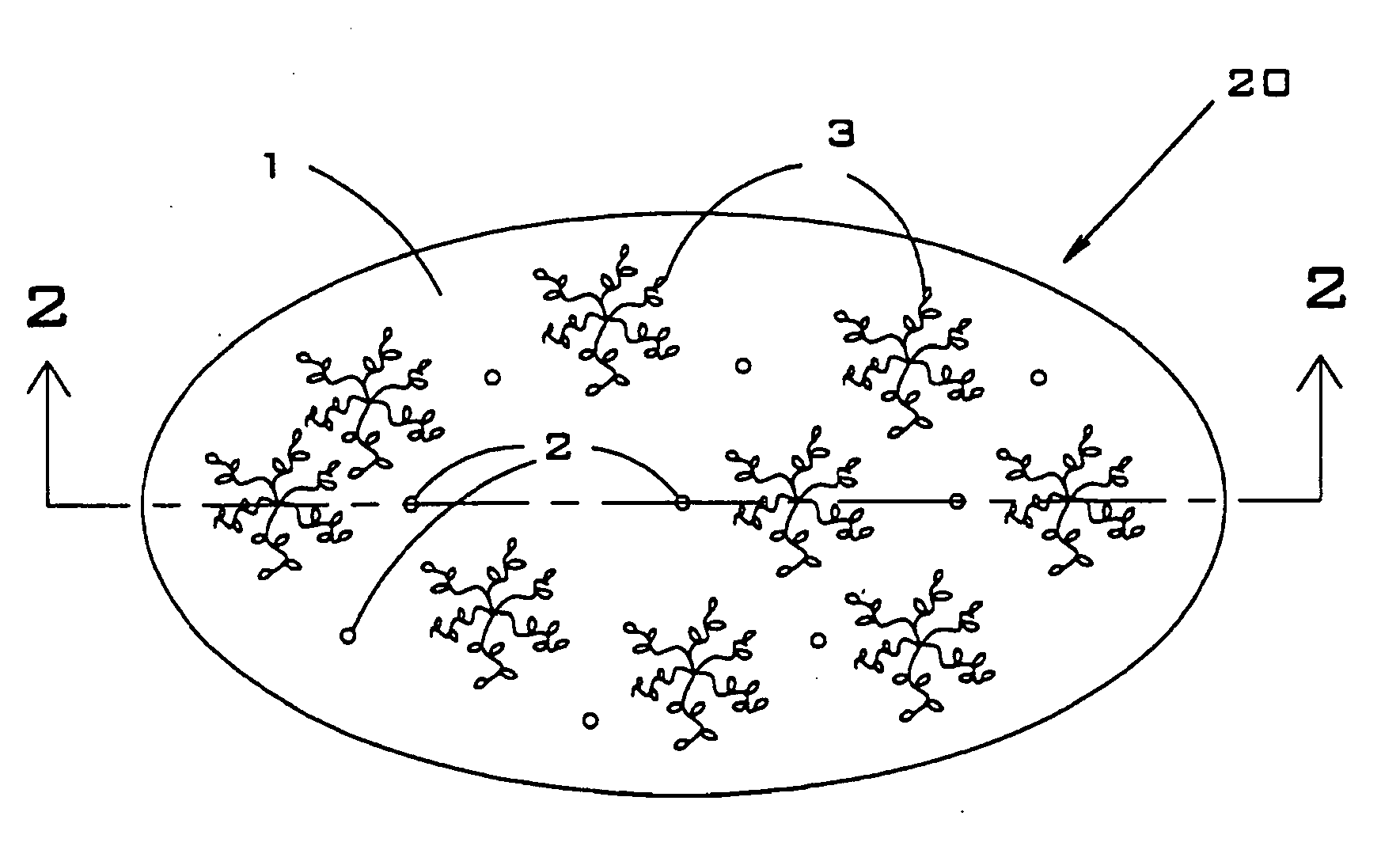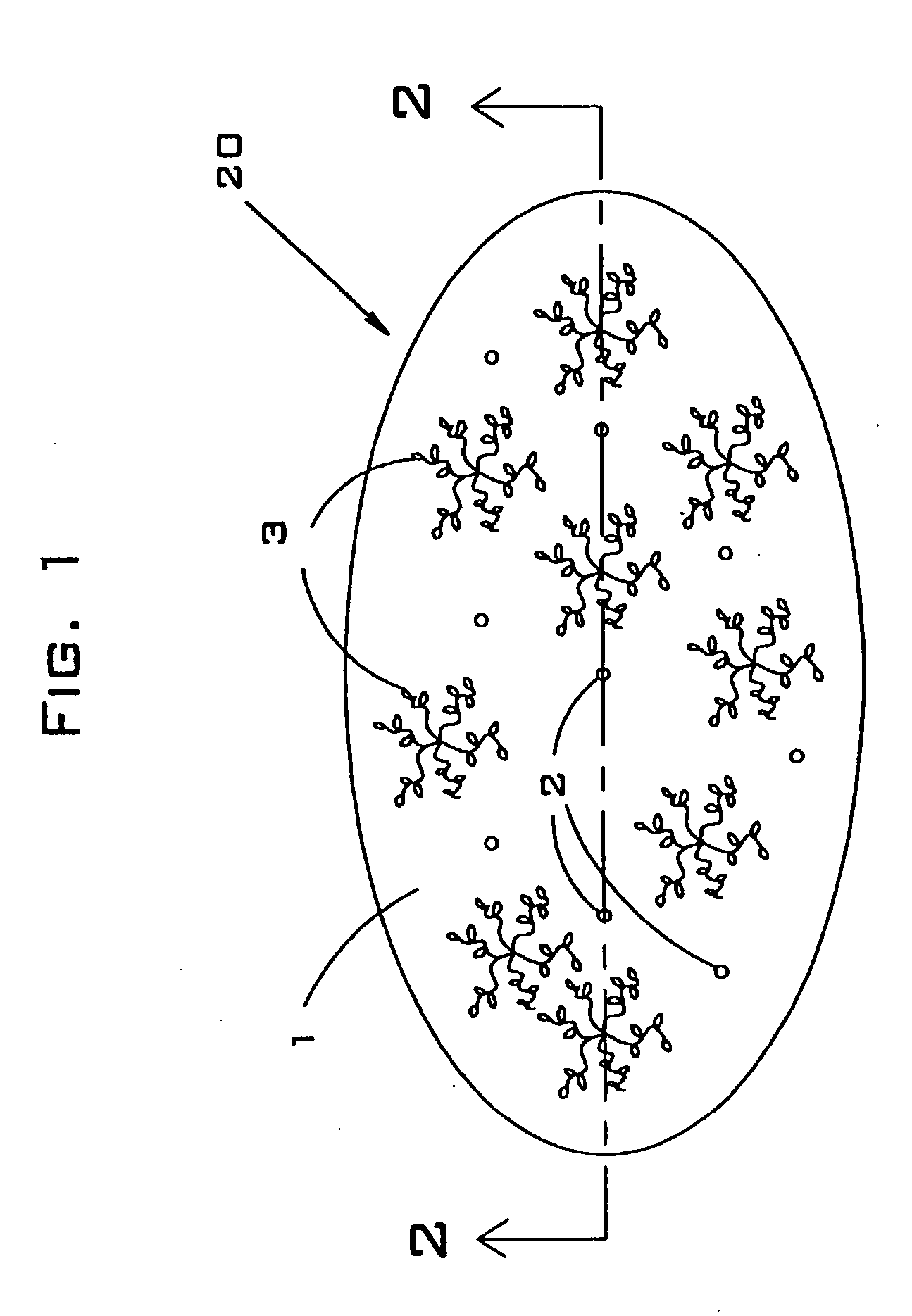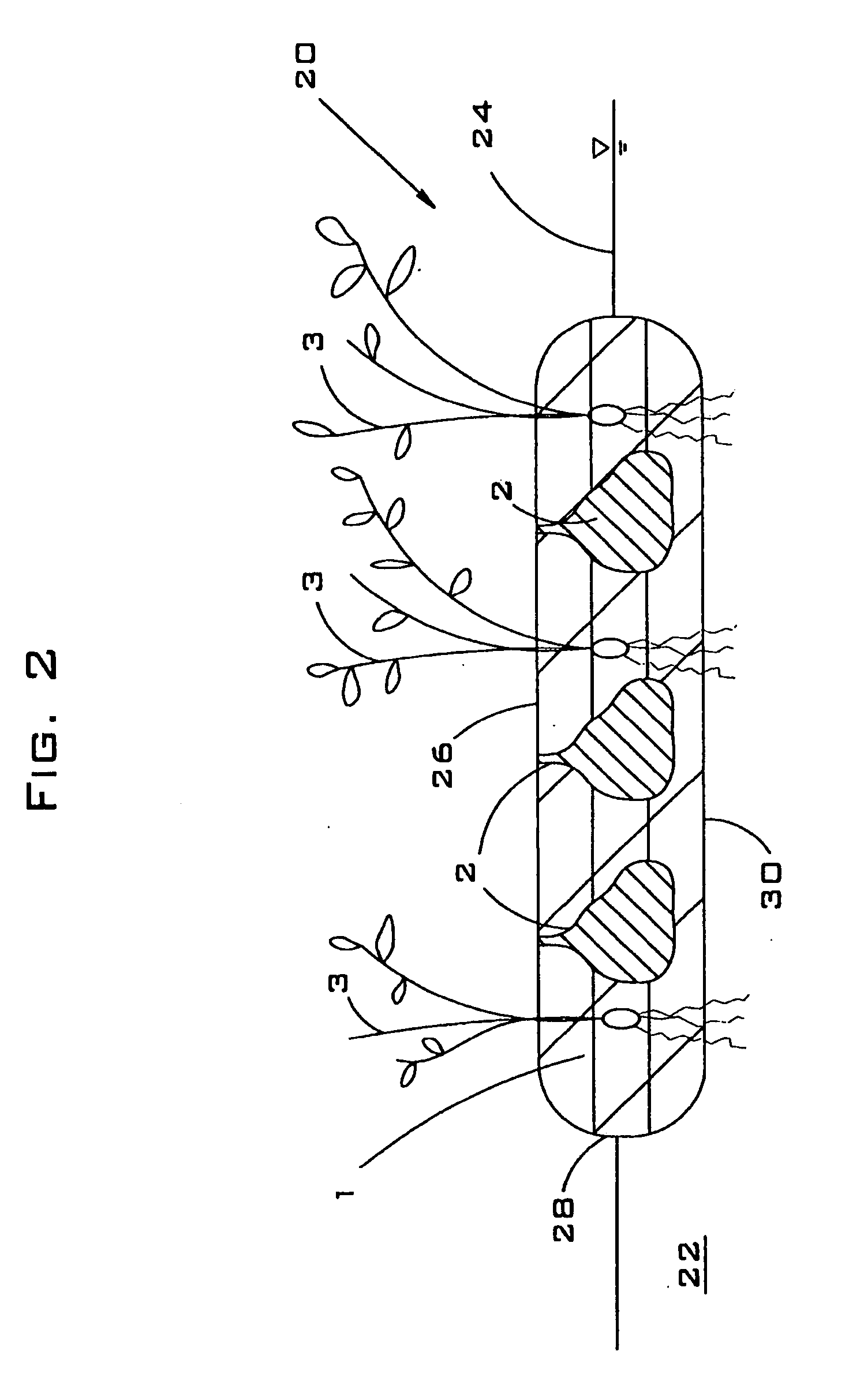Buoyant plant habitat and process for its manufacture
a plant habitat and plant technology, applied in the field of floating plant habitats, can solve the problems of damage to growing plants, insufficient buoyancy or large floating planters for human traffic, and the method of providing buoyancy is fragile, so as to achieve relatively rigid and buoyant walkways, the effect of maintaining buoyancy
- Summary
- Abstract
- Description
- Claims
- Application Information
AI Technical Summary
Benefits of technology
Problems solved by technology
Method used
Image
Examples
Embodiment Construction
[0087]Referring to FIG. 1, a preferred embodiment of floating island or buoyant plant habitat 20 is presented. In this embodiment, floating island 20 comprising nonwoven matrix 1, buoyant polyurethane foam units 2 and plants 3. Preferably, buoyant units 2 are manufactured by injecting uncured liquid polyurethane resin under pressure through top surface 26 of porous matrix 1. The polyurethane resin is then allowed to expand and cure in place within matrix 1. The injection pressure, resin temperature, and injection shot volume of the foam injection machine (not shown) are preferably preset so as to provide the desired final volume of cured buoyant foam in each one of the buoyant units 2. In preferred embodiments, the polyurethane resin is injected through the top, sides, or bottom of the floating island 20, or through a combination of these surfaces, depending on the particular application of the island.
[0088]Referring to FIG. 2, a side (elevation) cross-sectional view of the embodime...
PUM
| Property | Measurement | Unit |
|---|---|---|
| diameter | aaaaa | aaaaa |
| pressure | aaaaa | aaaaa |
| densities | aaaaa | aaaaa |
Abstract
Description
Claims
Application Information
 Login to View More
Login to View More - R&D
- Intellectual Property
- Life Sciences
- Materials
- Tech Scout
- Unparalleled Data Quality
- Higher Quality Content
- 60% Fewer Hallucinations
Browse by: Latest US Patents, China's latest patents, Technical Efficacy Thesaurus, Application Domain, Technology Topic, Popular Technical Reports.
© 2025 PatSnap. All rights reserved.Legal|Privacy policy|Modern Slavery Act Transparency Statement|Sitemap|About US| Contact US: help@patsnap.com



